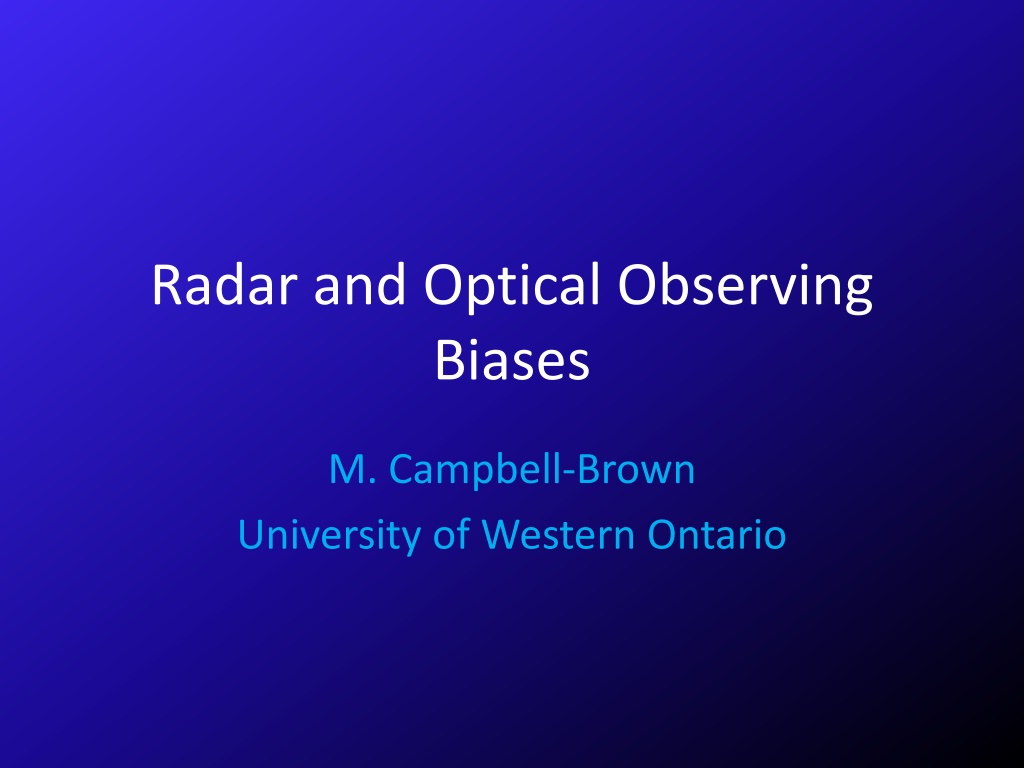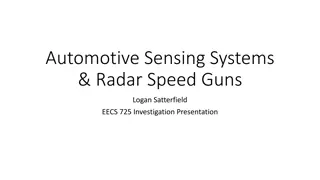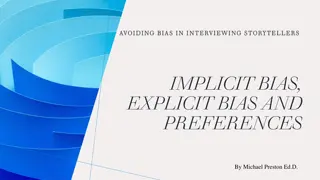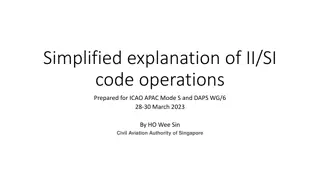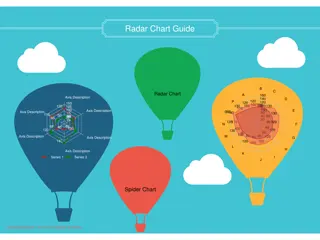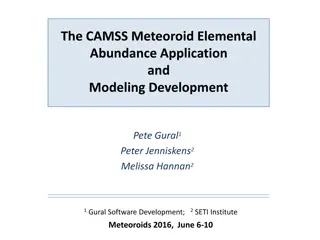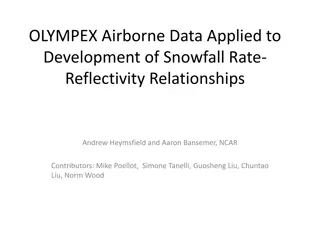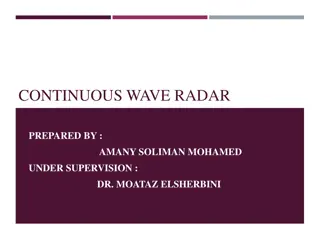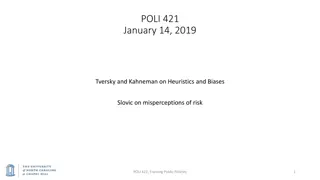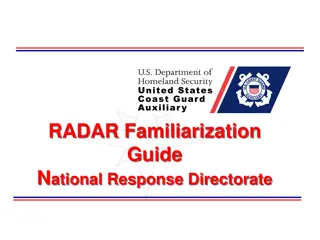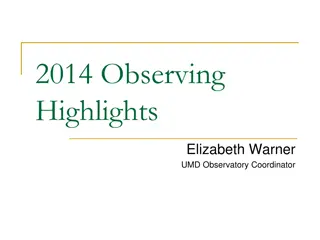Understanding Radar and Optical Observing Biases in Meteor Detection
Exploring radar and optical observing biases in meteor detection, this content delves into factors affecting mass detection, ionization efficiency, transverse radar effects, and more. Gain insights into how radar technology plays a crucial role in determining meteor properties and overcoming observational challenges.
Download Presentation

Please find below an Image/Link to download the presentation.
The content on the website is provided AS IS for your information and personal use only. It may not be sold, licensed, or shared on other websites without obtaining consent from the author. Download presentation by click this link. If you encounter any issues during the download, it is possible that the publisher has removed the file from their server.
E N D
Presentation Transcript
Radar and Optical Observing Biases M. Campbell-Brown University of Western Ontario
All meteor observations Limiting mass is a function of speed Limiting mass is a function of meteor position Mass distribution index needed to correct rates Detection algorithms
All radars Ionization efficiency vs. speed Generally observe a small portion of the trail (1stFresnel zone/main beam): extrapolate to get total mass Radar
Transverse scatter radars (backscatter) Initial trail radius Finite velocity effect PRF effect Faraday rotation (linearly polarized beams) Transverse Radar
Initial radius Meteors ablating high in the atmosphere suffer destructive interference. The form of initial radius with height is not well known, and may be complicated by fragmentation. meteor Ionization column Radar beam Transverse Radar
Finite velocity effect A meteor trail expands as it crosses the first Fresnel zone (where most of the scattering occurs). If the meteor is slow, it may be attenuated before it reaches maximum amplitude. This effect is expected to be much smaller than the initial radius effect, but it affects mainly slow meteors. Transverse Radar
PRF effect Meteor echoes, particularly from weak or high meteors, decay quickly. If the pulse repetition frequency of the radar is not high enough, short echoes may be missed. This is also usually much smaller than initial radius. Transverse Radar
Faraday rotation When a radar beam travels through a region with free electrons (the ionosphere), along the magnetic field, the polarization of the beam rotates. If the returning beam s polarization is not parallel to the antenna, the echo is attenuated. This effect occurs only in the afternoon, for certain directions, and is not an issue for circularly polarized beams. Transverse Radar
Radial scatter radars Radar cross-section to mass relation Cross-section as a function of altitude Sidelobes a meteoroid head echo plasma Electron Density Radial Distance from Meteoroid Radial scatter Radar
Optical systems Mass scale (luminous efficiency) Depends on wavelengths observed Function of speed (?) Optical Borovicka & Betlem 1997, Perseid
Optical Collecting area Need to account for Range to camera(s) Angular speed/spread of light Sensitivity of camera Height bias Any obscured part of the field of view (wide field) Optical
Limiting meteor magnitude Usually no single limit; different in different parts of the field Depends on: Sky conditions (limiting stellar magnitude) Angular spread of light Optical
